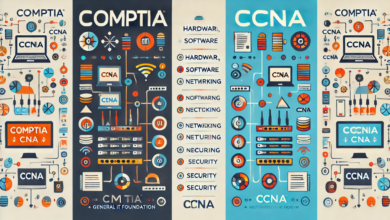How Implementing a Quality Management System Improves Compliance and Risk Management

Introduction
In today’s highly regulated business landscape, staying compliant with laws and managing risks effectively is more important than ever. Non-compliance can lead to hefty fines, legal issues, and a damaged reputation, while ineffective risk management can undermine business operations. Thankfully, implementing a Quality Management System (QMS) can significantly improve both compliance and risk management, ensuring smoother operations, better quality, and fewer regulatory headaches.
But how does a QMS play such a vital role? This article explores how adopting a compliance management system, coupled with a robust QMS, can enhance your business’s compliance and risk management practices.
What is a Compliance Management System?
A Compliance Management System is a structured framework that helps organizations adhere to industry laws, regulations, and internal policies. It ensures that a company complies with legal standards, ethical practices, and operational procedures, safeguarding both its business and reputation.
Key Elements of a Compliance Management System
A typical CMS includes:
- Policies and Procedures: Documented guidelines for meeting compliance requirements.
- Training and Awareness: Ensuring employees understand compliance expectations.
- Audits and Monitoring: Regular checks to ensure adherence to standards.
- Reporting Mechanisms: Clear ways to report compliance issues.
Understanding Quality Management Systems (QMS)
So, what exactly is a Quality Management System? A QMS is a set of processes that helps organizations ensure their products or services consistently meet customer expectations and regulatory requirements. This includes planning, monitoring, and improving quality at every step of production or service delivery.
What is a Quality Management System?
A QMS is more than just quality control; it’s a comprehensive approach that aligns your business processes with industry standards, customer needs, and regulatory requirements. It integrates everything from design and production to customer service, creating a cohesive framework for managing quality and compliance.
The Role of QMS in Ensuring Quality and Compliance
A well-designed QMS ensures that an organization can consistently deliver quality products or services that comply with regulations. This includes setting quality standards, continuously monitoring performance, and making improvements as necessary.
Why Compliance is Crucial for Business Success
Compliance isn’t just about following the rules—it’s about staying ahead of the competition and protecting your business from costly mistakes.
The Consequences of Non-Compliance
Non-compliance can result in hefty fines, legal penalties, and a tarnished reputation. In extreme cases, businesses can lose their licenses or certifications, which may be nearly impossible to recover.
Benefits of Meeting Compliance Requirements
On the other hand, maintaining compliance ensures smooth operations, builds trust with customers and regulators, and minimizes the risk of costly disruptions. A compliant business is viewed as credible and trustworthy, which ultimately contributes to long-term success.
How QMS Improves Compliance Management
A QMS provides several tools that make managing compliance much easier. It helps automate key processes, monitor performance, and create a culture of continuous improvement.
Streamlining Documentation and Record-Keeping
One of the most challenging aspects of compliance is managing the vast amounts of paperwork. A QMS helps streamline this process, ensuring that all documentation is organized, up-to-date, and easily accessible during audits.
Regular Audits and Continuous Monitoring
With a QMS in place, businesses can perform regular audits to ensure compliance with internal and external standards. This proactive approach helps catch compliance issues before they escalate.
Aligning Operations with Regulatory Standards
A QMS ensures that all company operations—whether related to production, service delivery, or administration—adhere to regulatory standards, minimizing the risk of non-compliance.
Risk Management and the Role of QMS
Effective risk management is all about anticipating potential problems and putting preventive measures in place. A QMS helps businesses identify risks early and take appropriate action to mitigate them.
Identifying and Mitigating Risks Early
A QMS encourages companies to continually assess their processes for potential risks, whether related to quality control, customer service, or compliance with industry regulations. Early identification allows for faster, more effective responses.
Automating Risk Management Processes with QMS
Automation is a game-changer when it comes to managing risk. A QMS can automate risk assessments, reporting, and mitigation strategies, ensuring that nothing falls through the cracks.
Using Data for Better Risk Insights
QMS tools gather valuable data on various processes, from production lines to customer interactions. This data provides insights into where risks are most likely to arise and helps organizations take proactive steps to address them.
Key Benefits of Implementing QMS for Compliance and Risk Management
A QMS offers a host of benefits that go beyond just meeting regulatory requirements. These advantages make it a valuable tool for businesses looking to improve both compliance and risk management.
Enhanced Efficiency and Reduced Costs
By streamlining processes and reducing errors, a QMS boosts efficiency, leading to cost savings.
Improved Product Quality and Customer Satisfaction
Consistency is key in quality management, and a QMS ensures that businesses consistently meet quality standards. This leads to better products and happier customers.
Regulatory Compliance and Risk Minimization
With continuous monitoring and improved risk management processes, a QMS ensures that businesses remain compliant and minimize potential risks.
ISO Standards and Their Impact on Compliance
ISO certifications, particularly ISO 9001, are globally recognized benchmarks for quality and compliance. Achieving ISO certification demonstrates a company’s commitment to maintaining the highest standards of quality and regulatory compliance.
How ISO 9001 Helps with Quality and Compliance Management
ISO 9001 provides a structured approach to quality management, including standards for process control, documentation, and continuous improvement. This makes it easier for companies to meet compliance requirements and manage risks effectively.
Automating Compliance Management with QMS
Automation is one of the most powerful features of modern QMS solutions. Automating compliance and risk management tasks ensures that businesses stay on top of regulatory requirements without constant manual oversight.
The Role of Automation in Streamlining Processes
Automation helps reduce human error, accelerates reporting, and ensures compliance with relevant regulations.
Benefits of Automated Compliance and Risk Tracking
Automated systems make tracking compliance and mitigating risks much more efficient. They provide real-time insights, flagging potential issues before they become serious problems.
The Integration of QMS with Other Business Systems
A modern QMS can integrate seamlessly with other business tools, such as Enterprise Resource Planning (ERP) and Customer Relationship Management (CRM) systems. This integration enhances efficiency, improves coordination, and ensures that compliance and risk management efforts are aligned across all departments.
Common Compliance Challenges and How QMS Can Overcome Them
Compliance can be complex, with constantly changing regulations and increasing pressure to meet standards. A QMS simplifies compliance by providing clear guidelines, real-time monitoring, and automated reporting.
Overcoming the Complexity of Regulations
A QMS ensures that businesses stay up-to-date with the latest regulations, helping them navigate complexity with ease.
Adapting to Changing Laws and Standards
A QMS is designed for flexibility, allowing businesses to quickly adapt to changing laws, standards, and customer demands.
QMS Implementation: Best Practices
Successful QMS implementation requires careful planning, training, and ongoing evaluation. Here are a few best practices to follow:
- Set Clear Objectives: Define what you want your QMS to achieve.
- Involve Employees: Ensure everyone in the organization understands their role.
- Monitor and Improve: Regularly assess the effectiveness of your QMS and make necessary adjustments.
Case Studies of QMS Implementation for Better Compliance and Risk Management
Real-life examples of businesses that successfully implemented QMS show how it helps improve compliance and risk management. These case studies offer valuable insights into the practical benefits of QMS in action.
The Future of Compliance Management and Quality Systems
The future of compliance management looks bright, with emerging technologies like artificial intelligence (AI) and machine learning revolutionizing how businesses monitor and manage compliance.
Emerging Trends in Compliance Management
AI and machine learning are helping businesses predict compliance risks, automate monitoring, and streamline audits.
Conclusion
Implementing a Quality Management System (QMS) is a powerful way for businesses to improve compliance and manage risk. It helps streamline processes, reduce errors, and ensures that a company remains compliant with industry regulations. Investing in a robust QMS isn’t just about meeting requirements—it’s about future-proofing your business and ensuring long-term success.




